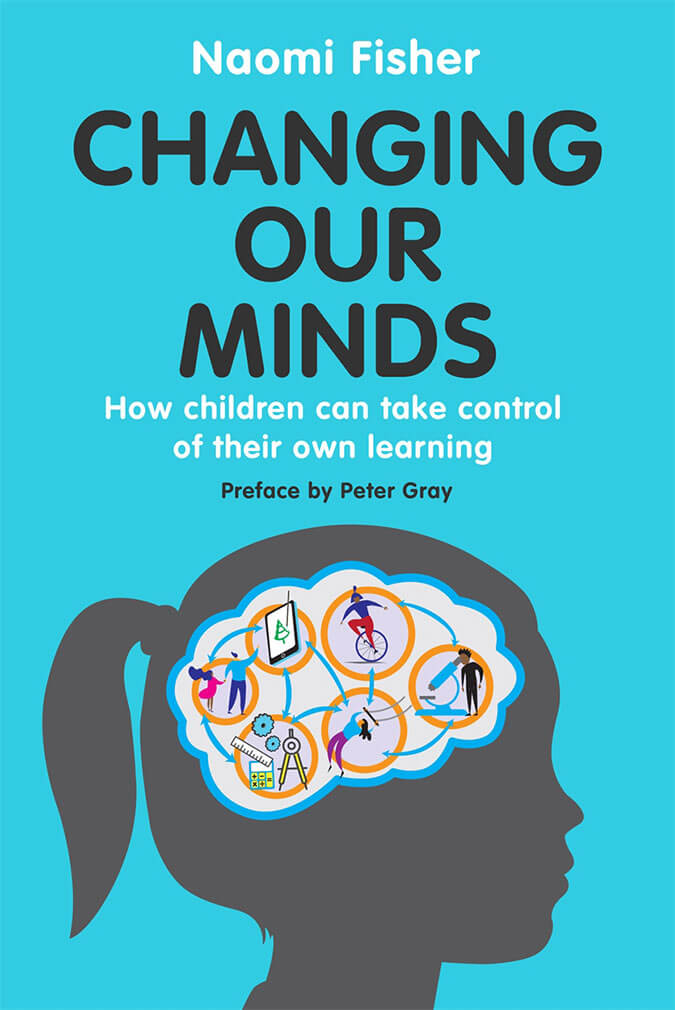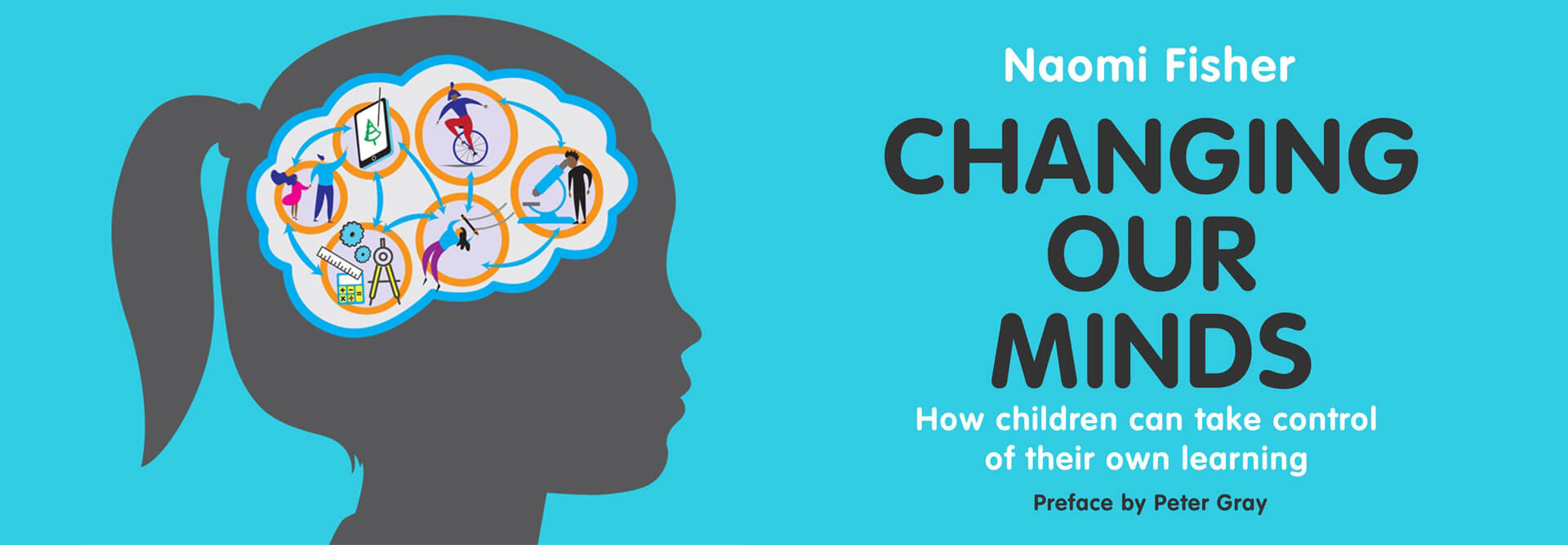In this chapter, I’ll start by explaining the relationship between stress and control. I’ll talk about how school adversely affects the mental wellbeing of some children, and why this happens. I’ll then discuss several ways in which children struggle emotionally, with some ideas as to what to do to help.

What’s the Problem?
In a Guardian article in February 2020, Greta Thunberg’s mother wrote about her daughter, who, at the time, was travelling the world and campaigning for governments to modify their policies on climate change. She describes how, since the age of eleven, Greta had been expressing distress. She was crying every day, all day; she stopped eating; she started having panic attacks. She was diagnosed with autism, OCD and almost hospitalised for her eating problems. She was put on drugs. Yet her mother writes: ‘What happened to Greta in particular can’t be explained simply by a psychiatric label. In the end, she simply couldn’t reconcile the contradictions of modern life. Things simply didn’t add up. We, who live in an age of historic abundance, who have access to huge shared resources, can’t afford to help vulnerable people in flight from war and terror – people like you and me, but who have lost everything . . . She saw what the rest of us did not want to see.’
When Greta started to act, starting a school strike which spread around the world, she started being able to eat and live again. Her mother sums up a dilemma of our time: are very distressed people sick or disordered, or do they see the world more clearly than the rest of us?
When we look at the wider environment, it’s unsurprising that children are distressed. Children today have easy access to an enormous amount of information, from all around the world. The news is not hidden from them and much of the news is not reassuring.
In addition, most of them spend their days in an environment which makes very specific competitive requirements of them, and over which they have almost no power. When they refuse to cooperate with this, they are said to be suffering from school refusal, or perhaps school phobia. This is often thought of as an irrational anxiety, a bit like being scared of spiders. But is it irrational to refuse to go to school? Instead of assuming that distressed children must be disordered, let’s think about whether school is an environment in which all children can thrive.
Once a child goes through the door of a school, they give up a significant amount of control. They can no longer make choices about when they can eat or use the toilet. They cannot wear their hair how they like or take treasured possessions with them. They are told what to do and assessed on how well they do it. Their only choice is whether to comply or not. If they don’t, they are in trouble. There are lots of demands and no privacy at all. Most adults would refuse to tolerate this, particularly with no pay, but we expect children to manage it for their entire childhood. To categorise resistance to this as a mental health problem seems to miss the point.
Control and Stress
When I left school, the first job I got was at Druckers, a handmade cake factory. We made patisserie for cafés all over Birmingham. I thought it would be fine, I’d do the job, earn the money, go home and live my life outside work hours.
When I entered the factory each morning, I first had to put on my uniform – white clogs, blue-and-white checked trousers, white apron and a white mob cap. When I was ready, I could clock in. The supervisor, Dave, who called all the women ‘Babs’, would tell me where to stand on the conveyor belt. We made fruit tarts, and I was given a huge bowl of mandarin orange segments. As each tart went past, I would carefully place three segments, and then it would pass on to Sara, who was doing the kiwi pieces. At the end, Amanda was on the hot-glaze spray gun, spraying the tarts with gel to keep it all together.
I worked from nine to six, and I had no control over when my breaks were; Dave would decide. Sometimes I would start at nine, and he would send me on my break at ten, and then my lunch at twelve, leaving me working from 12.45 p.m. – 6 p.m. without a break.
I soon noticed that there was an unofficial hierarchy of jobs. Conveyor-belt jobs were the lowest of the low. If the supervisor liked you, you could get promoted to the spray gun. If you missed out the occasional piece of fruit or sometimes got your satsumas the wrong way round, not a chance.
After two weeks of mandarin oranges, I started to dream about cakes. The conveyor belts went faster and faster in my dreams, with me running desperately behind, trying to get the mandarin oranges perfectly straight.
I don’t know why Dave decided to move me off the mandarin oranges. Perhaps he noticed my vacant expression and thought I needed a change to perk me up. Or maybe there was some new employee who needed to start out on the oranges. We never chatted in the factory. We couldn’t risk missing a cake, and the local radio station blared too loudly anyway. Faces came and went, and we only got to know each other if, by chance, we were sent on our break at the same time.
Anyway, I was moved to the profiterole machine. This was a huge metal cone, filled with cream, with two spikes sticking out at waist level. Profiteroles came along the belt, I had to grab two, put them on the spikes, and – ‘thunk’ – the machine filled them with cream. Thunk . . . thunk . . . thunk . . . thunk – the machine was set so that it regularly squirted cream out the spikes. You had to keep up the rhythm, or else the cream went all over you.
There I was, eight hours a day, sticking profiteroles on spikes as fast as I could to avoid being covered with cream. If Dave didn’t think I was working fast enough, he would come and turn up the machine: thunk-thunk-thunk-thunk-thunk-squirt. ‘Keep up, Babs!’ he’d bark.
Soon my dreams were filled with ‘thunks’ and cream. I stopped being able to sleep. I couldn’t do anything with the time I had off work. At the same time, I felt anxious and nervous all the time. My weekends were spent dreading Monday. At work, I was reduced to a rather faulty automaton. I had no control over anything.
Much as I needed the money, I just couldn’t do it. I lasted four weeks. Dave smiled when I handed in my notice.
Many people assume that the most stressful jobs are the ones at the top, the ones where you have the power to determine the future of thousands of employees, or to steer a company away from bankruptcy. It suits people in these jobs for everyone to think this, because that justifies their high salaries. It’s not uncommon for someone to choose a job where they have few choices and no control, in the belief that this will be less stressful.
In fact, the research shows the opposite. The most stressful work situation to be in is one where you have no control. Leaders experience less stress than those lower down the hierarchy. Feeling like you have some control is more important than other factors, like how demanding your job is.
This tallies neatly with some research I discussed earlier, on self-determination theory (SDT). If you remember, SDT is a theory of motivation, which suggests that autonomy, relatedness and competence underpin intrinsic motivation. Autonomy is the ability to make meaningful choices, to take some control over your life. Take away people’s autonomy, and you take away their joy. That’s what happened to me at Druckers. I had no control at all, except to leave the job. Children at school don’t even have that choice. And yet we wonder why they aren’t happy.
People Need Autonomy
Autonomy has been related to increased wellbeing in a large number of studies. When people have choice about what they do, and can stop when they want to, they feel better about the world and themselves. Richard Ryan and colleagues found that wellbeing for college students and workers increases at the weekend; the so-called ‘weekend effect’. Even when people work at the weekend, they tend to do it in their own time and in their own way, and therefore have increased autonomy as compared to during the week.
People who report high levels of wellbeing at work tend to be those – you’ve guessed it – with higher levels of autonomy over what they do.
Of course, some people have to do jobs where their autonomy is low. Sometimes, there is a requirement to just do the job at hand in the same way as everyone else and to very precise requirements. Although, even with these jobs, there are ways in which people can be given more autonomy. When I worked for Druckers, I could have been allowed to choose when I went on my break, or the speed I thought that the profiterole machine should be set at. I could even have been asked if I wanted to place mandarin oranges or strawberry slices.
It’s not clear what benefits there are in reproducing this low-autonomy system at school. Just because some jobs have few choices is no reason to spend twelve years making children practise feeling powerless. The school system works by gradually reducing autonomy as children grow. At pre-school and nursery, children are typically allowed to choose between a range of activities and are not made to continue with something once they have lost interest. However, from the age of five onwards, school becomes increasingly more controlling. Children generally have no meaningful choices about what they do all day. Even when, at age fourteen, they do get to make some decisions, it’s usually between which classroom they sit in and what information they will be tested on, rather than anything more significant.
In fact, when children leave school to be home-educated, one of the things they often do first is refuse to change out of their pyjamas or refuse to brush their hair. Some of them refuse to put clothes on at all or strip their clothes off the moment they arrive home from anywhere. It couldn’t be clearer that they felt that those requirements were externally imposed. When they have choices, they choose not to.
If you enjoyed this article and feel called to give back to ASDE, here are ways you can support our work:
- Donate money
- Share our content with others! Click one of the buttons above to easily share on Twitter, Facebook, or email.
- Consider becoming a Contributor for Tipping Points






